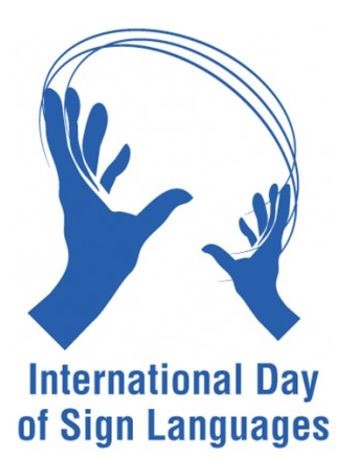Description

Disclaimer: Copyright infringement not intended.
Context
- Sign Language Day’ with the theme “A World Where Deaf People Everywhere Can Sign Anywhere!” was celebrated on 23rd September by the Indian Sign Language Research and Training Centre (ISLRTC), New Delhi.
Details
History of World Sign Language Day
- World Sign Language Day was officially established by the United Nations General Assembly in December 2017.
- The date, September 23rd, was chosen to commemorate the anniversary of the founding of the World Federation of the Deaf (WFD) in 1951. The WFD is an international organization that advocates for the rights and well-being of deaf individuals worldwide.
Sign Language: A Unique Language of Expression and Inclusion
- Sign language is a natural and visual-gestural language used by Deaf and hard of hearing individuals as well as those with communication disorders to convey messages, thoughts, and emotions.
- It is a rich and complex form of communication that relies on a combination of handshapes, movements, facial expressions, and body language.
- Sign languages are not universal; different countries and regions have their own distinct sign languages.
- According to the World Federation of the Deaf, there are over 70 million deaf people in the world. More than 80% of them live in underdeveloped countries. They collectively use more than 300 different sign languages.

Historical Background:
- Early Beginnings: Sign language has a long history that predates written language. Deaf communities have used sign languages for centuries to communicate and establish their identities.
- Milestones: The emergence of formal sign languages can be traced back to the 18th century when educators like Charles-Michel de l'Épée in France and Thomas Hopkins Gallaudet in the United States developed sign languages for Deaf education.
Linguistic Structure:
- Grammar and Syntax: Sign languages have their own grammar and syntax, which are different from spoken languages. They rely on word order, facial expressions, and non-manual signals to convey meaning.
- Vocabulary: Sign languages have extensive vocabularies, often built around visual representations of concepts. Signs can be iconic, meaning the sign resembles the object or action it represents.
- Regional Variation: Just like spoken languages, sign languages have regional variations. Different countries and even different cities may have their own sign languages or dialects.
Types of Sign Languages:
- Natural Sign Languages: These are developed organically within Deaf communities and are used as the primary means of communication. Examples include American Sign Language (ASL), British Sign Language (BSL), and French Sign Language (LSF).
- Manually Coded Languages: These are systems that use signs to represent the spoken language. Examples include Signed Exact English (SEE) and Cued Speech. These are often used in educational settings.
The Importance of Sign Languages
- A Vital Means of Communication: Sign languages are natural visual-gestural languages used by deaf and hard of hearing people to communicate with each other and with hearing individuals. They are complete and complex languages with their own grammar, vocabulary, and syntax.
- Promoting Inclusivity: Sign languages play a crucial role in breaking down communication barriers and promoting inclusivity. They enable deaf individuals to participate fully in society, education, and various aspects of life.
- Cultural Identity: Sign languages are not just tools for communication; they also form an integral part of the cultural identity of the deaf community. Celebrating these languages acknowledges and respects the diversity of deaf cultures around the world.

Conclusion
Sign language is a unique and vibrant form of communication that enriches the lives of Deaf and hard of hearing individuals. It is not just a means of conveying words; it is a gateway to culture, identity, and inclusion. Recognizing the importance of sign languages and promoting their use is essential for creating a more inclusive and accessible world for all. Sign language is not just a language; it's a celebration of diversity and a testament to the resilience of Deaf communities worldwide.
|
PRACTICE QUESTION
Q. Which of the following statements about World Sign Language Day is/are correct?
- It is observed on September 23rd every year.
- The day commemorates the founding of the World Federation of the Deaf.
- It is observed on the birthday of Louis Braille, the inventor of Braille.
Options:
A) 1 and 2
B) 2 and 3
C) 1 and 3
D) 1, 2 and 3
Answer: A)
|







